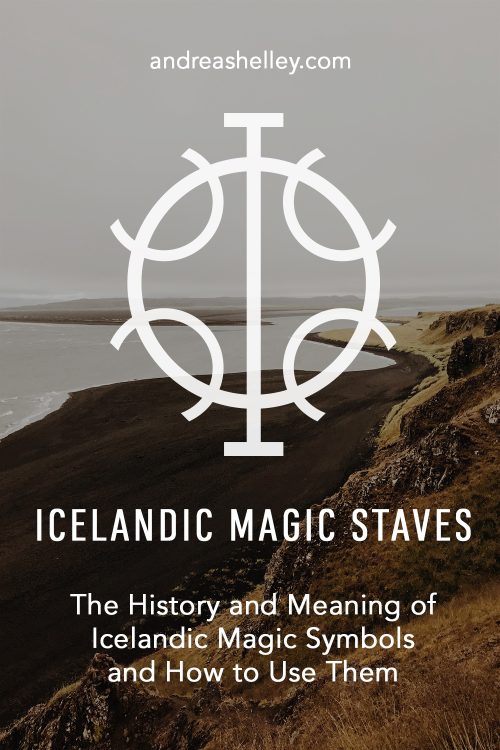
Updated January 2023
Icelandic magic has strong ties to the old Norse religion, which is still practiced in Iceland today. Behind this faith are a variety of symbols that have been used for centuries for both magical and religious purposes.
Said to have been created by the gods, these symbols have been passed down from generation to generation before being recorded in the books of the modern era.
The Galdrastafir or Icelandic magic staves are used to invoke protection, fertility, wisdom and more. These magical sigils can be found all across the country and have even come to represent Icelandic culture to the rest of the world.
These remarkable symbols can be written on paper, carved into stone or wood, or worn as jewelry to achieve the desired result.
Following are some of the most common symbols, their meanings, and how to use them to enrich your life.
Table of Contents
History of the Icelandic Magic Symbols
Nobody is sure exactly where each symbol originated or how old they are. Perhaps it’s true that they were given to us by the gods, or maybe they were crafted by various Galder magic practitioners hundreds of years ago.
What we do know is that there are several manuscripts that include collections of symbols and spells said to have been copied from earlier sources (none of which have been found).
It’s possible that the original texts were destroyed when Christianity made its way to Iceland and it became very dangerous to practice any type of witchcraft.
As it is, all we have to learn from is a scattering of more modern texts – two of the more well-known books I’ll mention below.
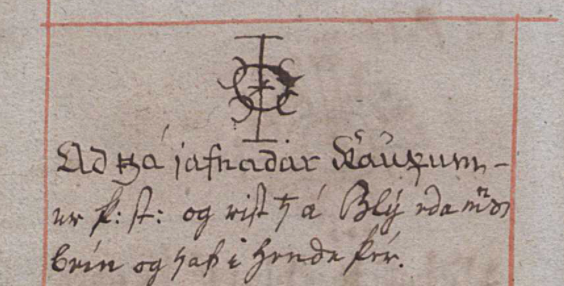
The Galdrabók
The most well-known of these books is the Galdrabók, written in Iceland sometime in the late 16th to early 17th century. This Icelandic magic grimoire was created by four different people working over a long period of time. The book was passed from person to person, each one adding something to the manuscript.
The finished Galdrabók is a collection of 47 spells, sigils and staves, and information on using herbs and other items for magical purposes.
The Huld Manuscript
Written in the mid-1800s by Geir Vigfússon, the Huld manuscript is a collection of spells and information gathered from unknown earlier sources. Much like the earlier Galdrabok, it includes runic tables, magic symbols and staves, and instructions for their use.
The Three Different Types of Icelandic Magic Symbols
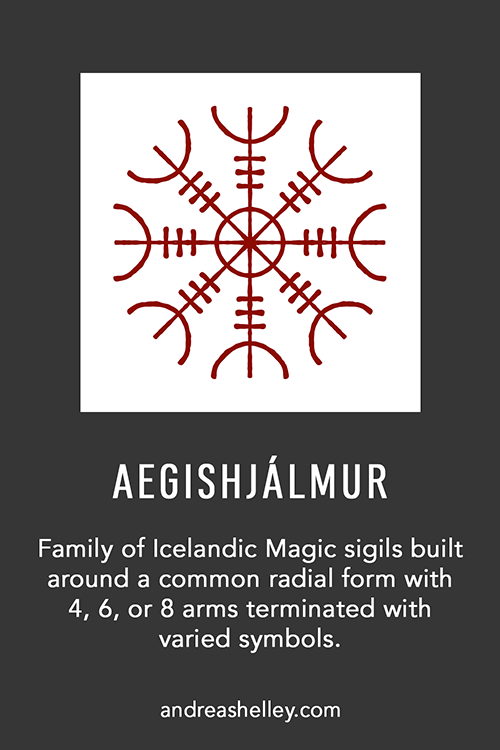
Aegishjalmur
While most people think Aegishjalmur or “Helm of Awe” is a single symbol, it’s actually a family of widely varied symbols built around a common form: a generally round, symmetrical sigil with an even number of forked arms radiating outward from a centre point.
This style of symbol is very common within the Icelandic magical workings because it’s simple to learn and you can easily adapt it to suit your particular needs. By changing the number of arms as well as the location and shape of the forked symbols on each arm, you can personalize the nature of the magical working to accomplish various intents.
Stephen E. Flowers explains the Aegishjalmur as representing the entirety of the universe. At the centre is the core – the self or the subject of the magical working. The arms of the staves grow outward from the core towards everything beyond it.
Looking at it this way, we can picture the arms of Aegishjalmur radiating out from ourselves, directing energies either outward or inward depending on the symbols (terminal figures) on the arms of the sign and the intention of the workings.
Try drawing some Aegishjalmur yourself and experiment with the way they make you feel. Think about the intention you wish to achieve with your magic sigil – Do you wish to draw energy towards you? Put up a shield between you and negative energy that is around you?
Whatever working you’re trying to do will dictate the shape of the symbol you use.

Galdramyndir
Galdramyndir (meaning magic picture or magic image) are symbols that aren’t based on rune shapes but rather have their origins in secret keys. This form of magic is generally the product of creative freedom and the designer wanting to hide the meaning of the sign from those who might see it.
A magic square is one example of a coded key. Seen above is a 4×4 square with each of the younger futhark runes arranged inside. You can then trace a word or name by connecting the runes – creating a coded symbol.
This symbol could then be stylized, concealing the meaning even further.
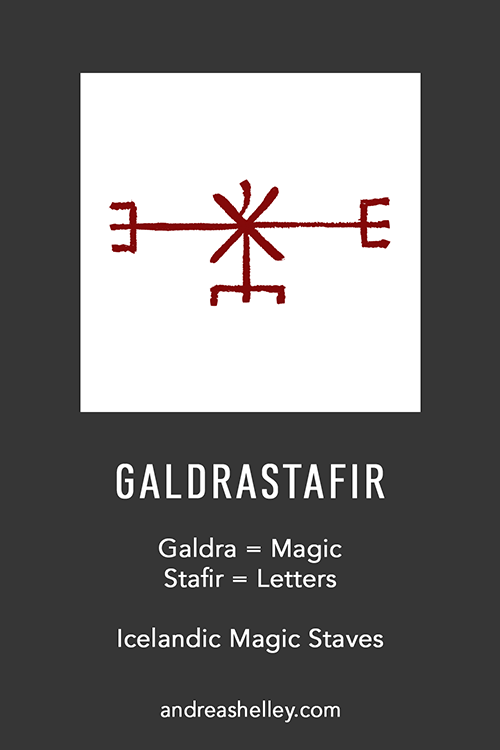
Galdrastafir
Galdrastafir means spells. If you break up the word into its two parts Galdra (from Galdur) meaning magic, and Stafir meaning letters, it makes sense that this family of symbols is based on the runes.
These signs or magic staves began as runic symbols that make up words or names in Old Norse. However the original rune meaning may no longer be recognizable as the creator often wanted to conceal their work. Galdor magic was a very secretive practice – in large part because it was illegal in many areas after the introduction of Christianity.
Galdur stave magic has been used in Iceland since ancient times by magical practitioners experimenting with various signs until they found one that worked. They recorded the successful symbols in books (grimoires) to be passed on to the next generation of galdur practitioners who would then elaborate on this work.
Consider this type of magic to be sort of like a recipe. Each cook adapts it to their tastes but, while you can definitely make your own recipes, it’s much easier after you’ve practiced with some proven formulas to understand how the ingredients come together and what works best.
Just like cooking, creating Galdrastafir is a mix of science and art. These magical symbols are created using either a name of Odin or a word translated into old Norse then written out with the runes of the younger futhark – this would be considered the scientific part.
Next, the runes are combined to form a bindrune – here’s where creativity comes into play. The position of each rune and form of the finished bindrune is completely up to the magician. The finished symbol should include each of the runes needed but also encompass the intention of the spell.
Stephen Flowers states “if the operation seeks harmony and goodwill, symmetry and grace may be your guiding principle, but if destruction or chaos is your aim, then perhaps the resulting magical sign should reflect this spirit.”
In other words, the symbol should evoke a feeling that is in alignment with the goal of the working. If your warding spell feels happy and welcoming, it may not be doing its job.
Meanings of the Icelandic Magic Symbols
Ástarstafur
Ástarstafur comes from ástir which means love or affection, and stafur which means stave.
Listed in the Sorcerer’s Screed as “Stave to win a girl”, it instructs the user to write the symbol on a pig’s belly with blood from your left nipple. This pigskin is then hidden under the woman’s pillow or mattress to tempt her love.
While this may have been acceptable in less enlightened times, nowadays, this symbol is used to attract affection in a less devious manner.
Given to a loved one it can be a token of love, a powerful talisman that strengthens the bond between two people.
Or, if chosen for your own workings, it can help you to stay open and accepting of love – both from yourself and others.
Danobus
Danobus takes its name from the incantation that accompanies the symbol in the manuscript.
Listed under the note “to acquire the object you crave” the instructions are to carve the magic symbol in lead with your knife, hold it in your hand and read aloud the verse:
“Danobus ho died dimi timii petaribus haf tras mendiu dakar.”
Upon further examination, this is a garbled version of some of the Paternoster (the Our Father prayer in Latin).
This could have been added when Christianity flooded across Iceland or, as some theorize, this prayer may pre-date the Christian Church entirely. Some believe it is of Persian origin – which could have spread to the Germanic peoples before they ever came to Iceland.
Either way, this symbol is a request – to the universe, or god, or whatever energies you’re calling on – to grant us that which we wish.
Essentially an ancient manifestation ritual.
Vegvísir
Vegvísir, (VEGG-vee-seer) is the Wayfinder. From the Icelandic words Vegur which means Way, Road or Path, and Vísir which is translated as Pointer or Guide.
The oldest existing reference to the symbol that we call “vegvísir” can be found in the Huld manuscript composed by Geir Vigfússon. Written in 1860, the Huld manuscript consists of a collection of materials and information from unknown earlier sources.
Among the 30 magical symbols gathered in the text, Vegvísir is found with the following inscription:
“Beri maður stafi þessa á sér villist maður ekki í hríðum né vondu veðri þó ókunnugur sé.”
“Carry this sign with you and you will not get lost in storms or bad weather, even if the way is not known.”
While there is no evidence this is a Viking-era symbol as some are have been led to believe, Vegvísir is a powerful symbol of protection and guidance, which can be used to find one’s way when lost – physically or metaphorically.
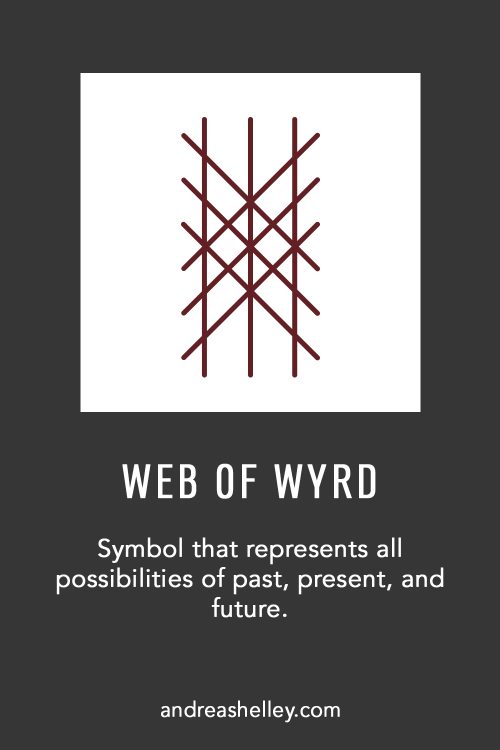
Web of Wyrd
The Web of Wyrd (also sometimes called Skuld’s net) is a symbol that represents the interconnectedness and interdependency between past, present & future. It illustrates how actions in one time can affect another – for example if you do something now it may have an effect on what happens to someone else later down their own timeline or journey through life…or vice versa!
The Web of Wyrd was created by the Norns/Nornir.
In Norse mythology, the wise Norns are mysterious beings who exist in between and beyond what is known. In the Völuspá we learn of the three norns: Urd (Old Norse Urðr, “The Past” and a common word for fate in and of itself), Verdandi (Old Norse Verðandi, “What Is Presently Coming into Being”), and the third Skuld (Old Norse Skuld, “What Shall Be”).
They live beneath Yggdrasil, the world tree, and they are the guardians of life. They sit by the well of fate, weaving, and measuring out time by the length of their threads.
They choose who will live or die at birth as well as determine what events happen to people during their lifetime.
The symbol we know as the Web of Wyrd is formed of nine lines. Contained within its intersections are all of the runes – representing all of the possible events that have happened in the past, the present and the future.
This symbol is a reminder that, though we may be bound by fate, we have the power to choose our own actions and influence our own futures. The Nornir sit by the well of fate, watching and weaving.
Your actions thus far have brought you here. Where will you go next?
Did I miss any symbols that you’d like to learn more about?
Leave a comment and I’ll try to add them to the post.
How to use Icelandic Magic every day
I’m a firm believer that the more you connect yourself with a symbol, the more powerful it becomes in transforming your life.
Think of it as going to the gym. If you go once or twice, are you in shape? Probably not. But if you show up every single day, even if some days you only do a little, that combined effort over time will change your life.
So, how can you create a daily ritual with Icelandic magic symbols?
Choose a symbol
First you want to choose a stave that matches your intentions or goals. To continue the workout analogy – here you’re choosing your gym. Find one that aligns with your values and that you feel a connection to.
Make a commitment
Next, buy a membership. What does that mean? It means you’re making an investment, committing to doing the work, and making a change.
You can do this in a number of ways: draw the symbol on a piece of paper, carve it into wood, or purchase a piece of jewelry with a magic stave. What we’re looking for here is a tangible object to anchor your intentions. The more meaningful the object, the more connected you will be.
Plan it out
Finally, make a plan. Decide how many times a week you’re going to “show up” and what actions you’ll take.
Are you going to wear your Danobus necklace every day so you can hold it in your hand and speak your affirmations & wishes each time you lose focus?
Will you trace Ástarstafur in the mirror each morning while complimenting yourself?
Tuck a Vegvísir in your shoe to guide you on your chosen path?
Make a plan, write it down, put it somewhere you can see it.
Do the work
The only thing left is to follow the plan. Do the work and the magic will happen.
References
Eggertsson, Jochum Magnús (1940). The Sorcerer’s Screed: The Icelandic Book of Magic Spells. Rev. Ed. Gunnarson, A. F. (2013). Icelandic Magic Company, Reykjavik (2018).
Flowers, Stephen (1995). The Galdrabók: An Icelandic Book of Magic.
Flowers, Stephen (2016). Icelandic Magic: Practical Secrets of the Northern Grimoires.
Andrea Shelley
HI, I'M ANDREA! I create powerful, meaningful jewelry that you can connect with and enjoy each day. I believe that jewelry, when worn purposefully, can have transformative powers. My pieces go beyond decoration to help connect you to your inner self and focus your energies to your greatest strengths. If you're enjoying my content, you can support my page by buying me a coffee so that I can continue to make more content for you.
5 Comments
Leave a comment
/ Cancel Reply
Related Posts
-
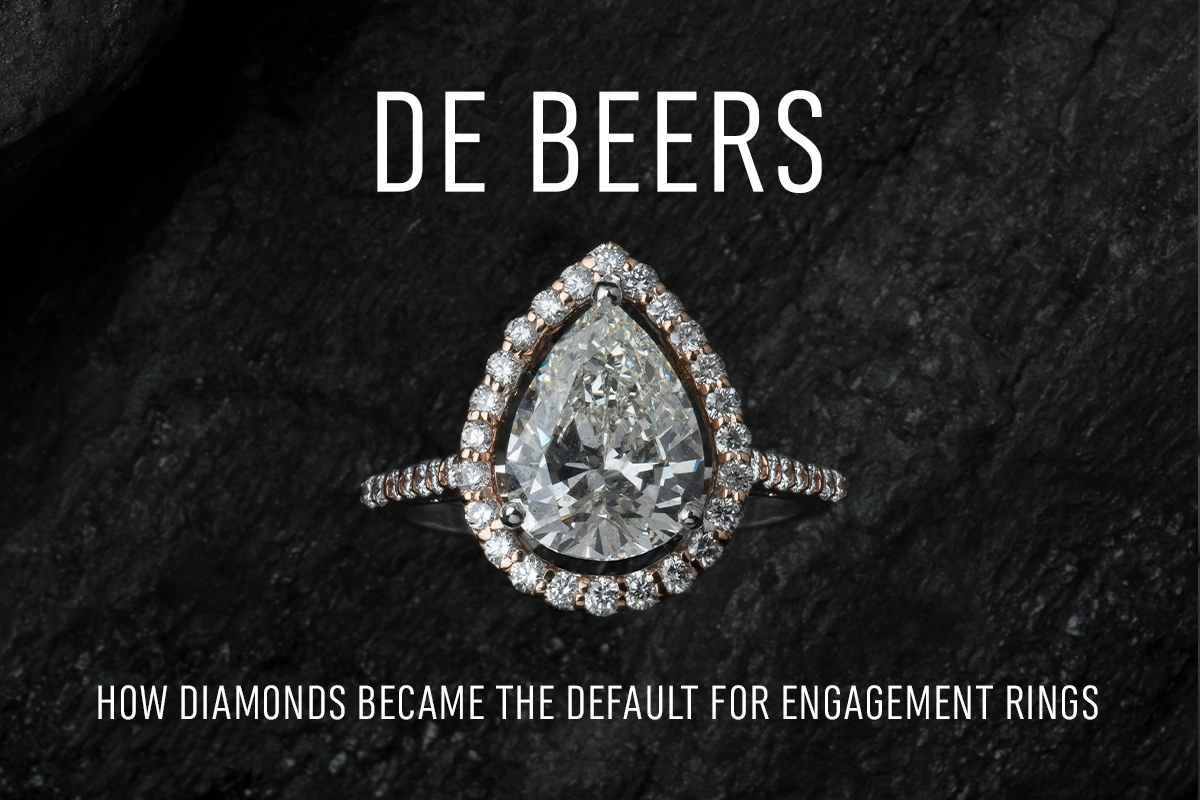
Why is Diamond the Default for Engagement Rings?
May 27, 2024
-

Birthstones: Learn Meaning & Colour by Month
February 14, 2024
-
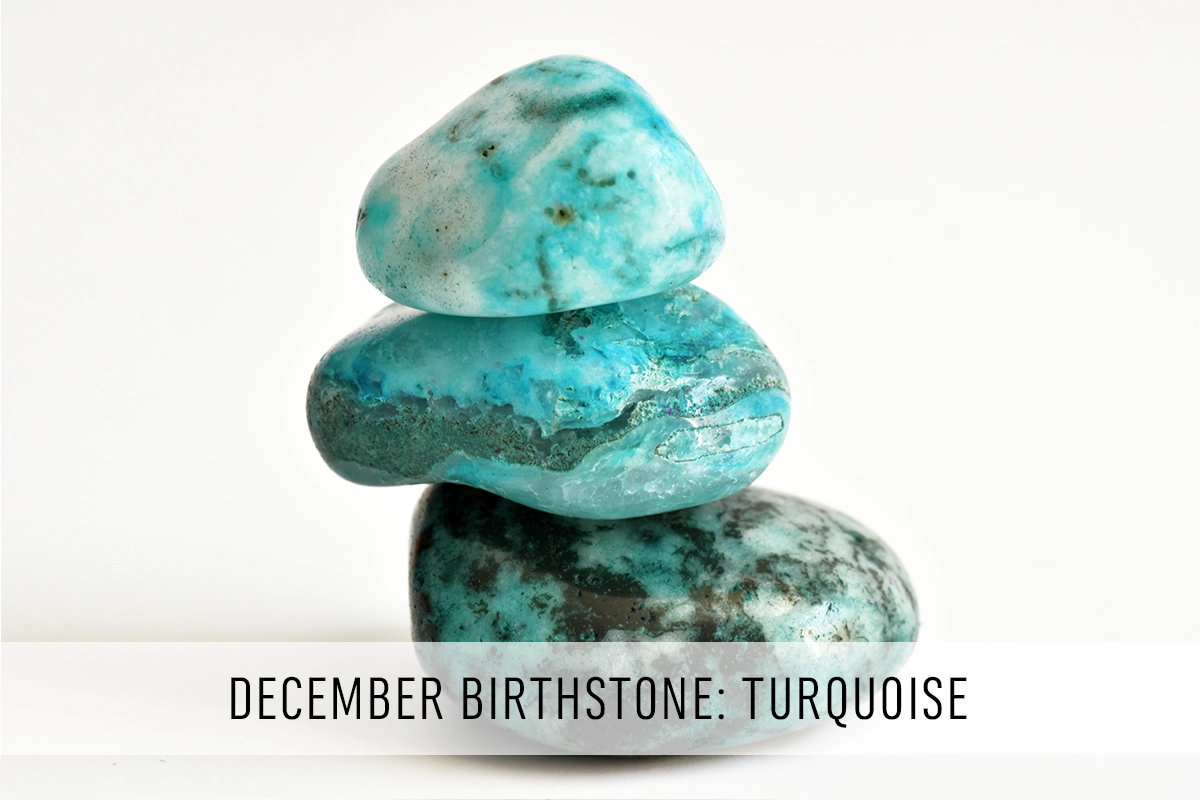
December Birthstone: Turquoise
December 6, 2023


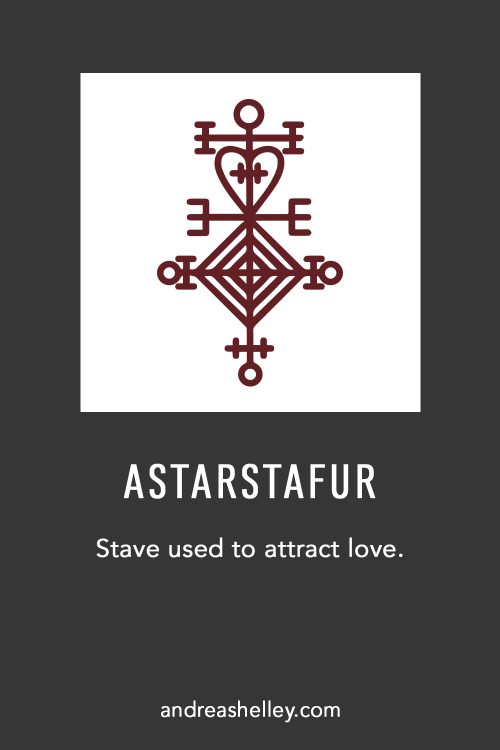
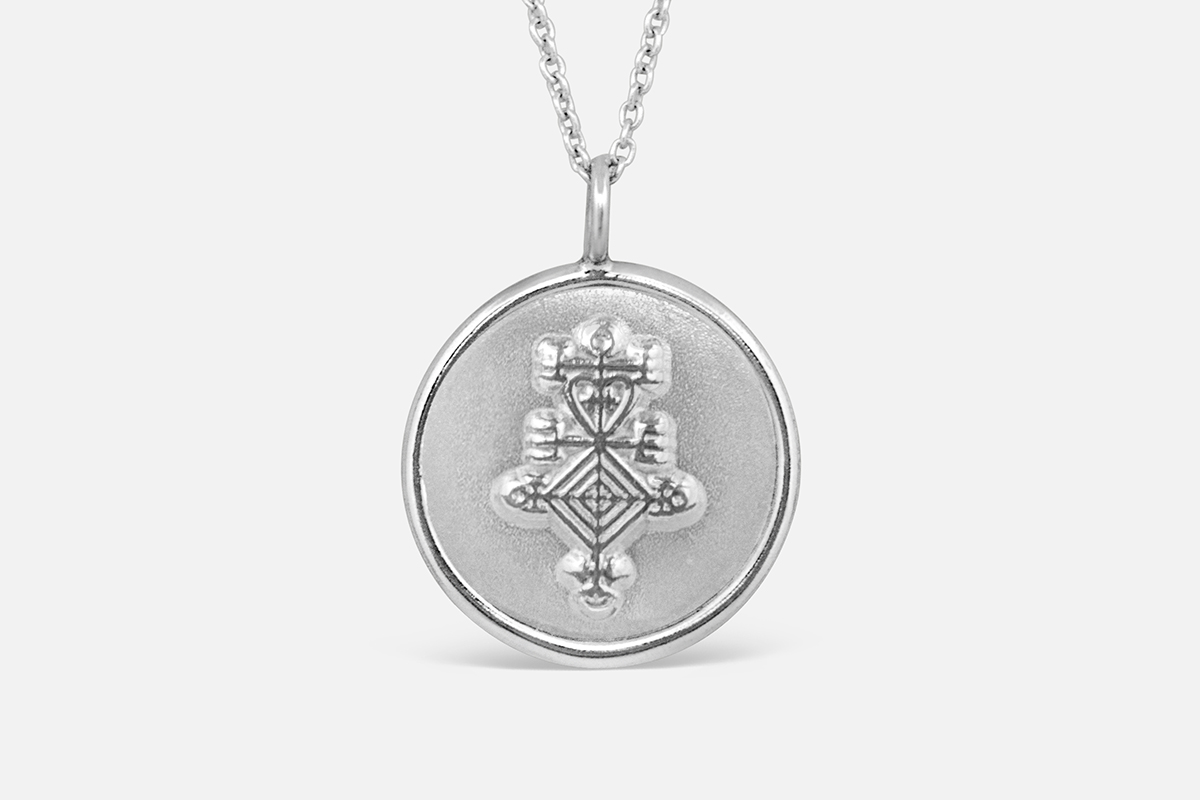
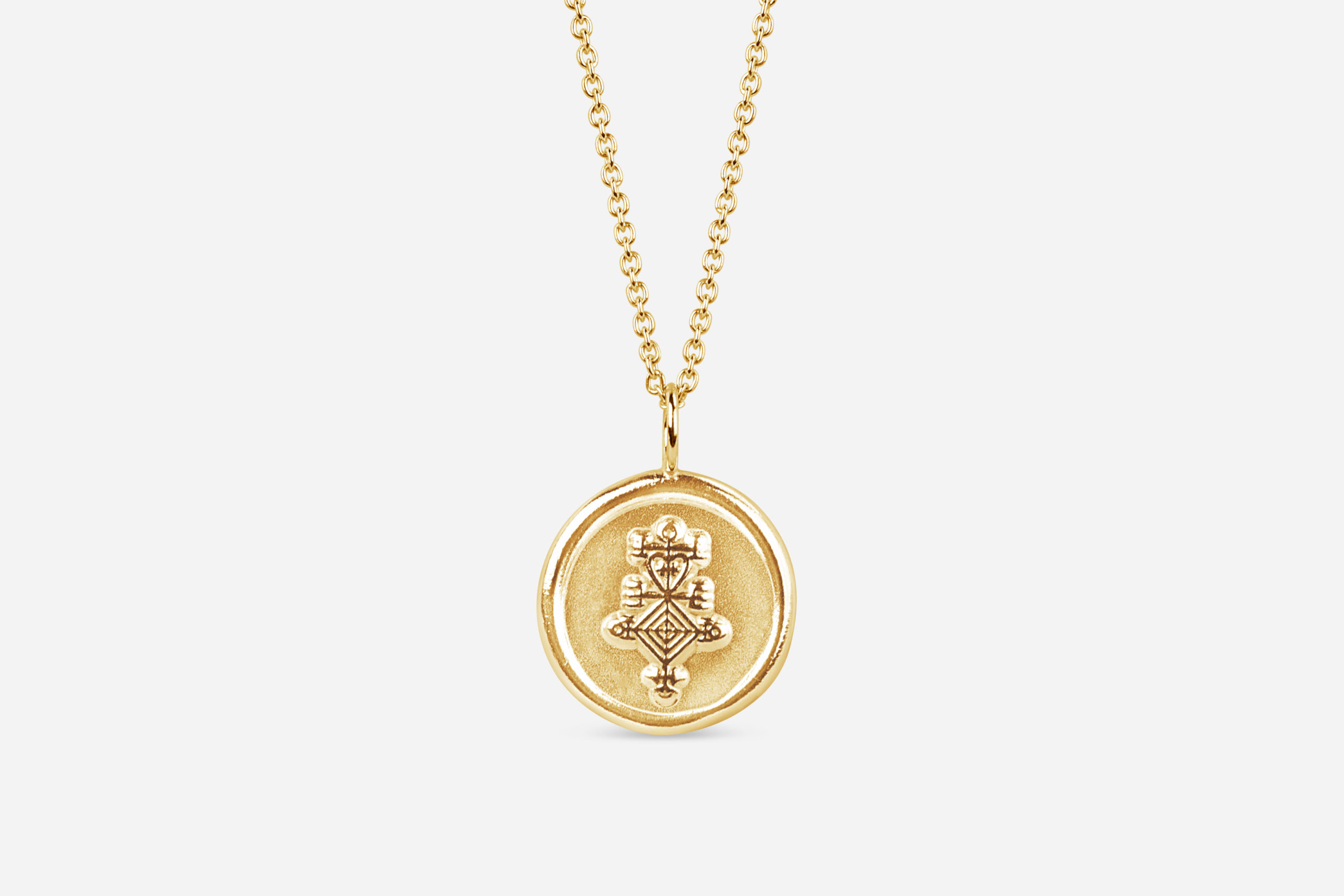


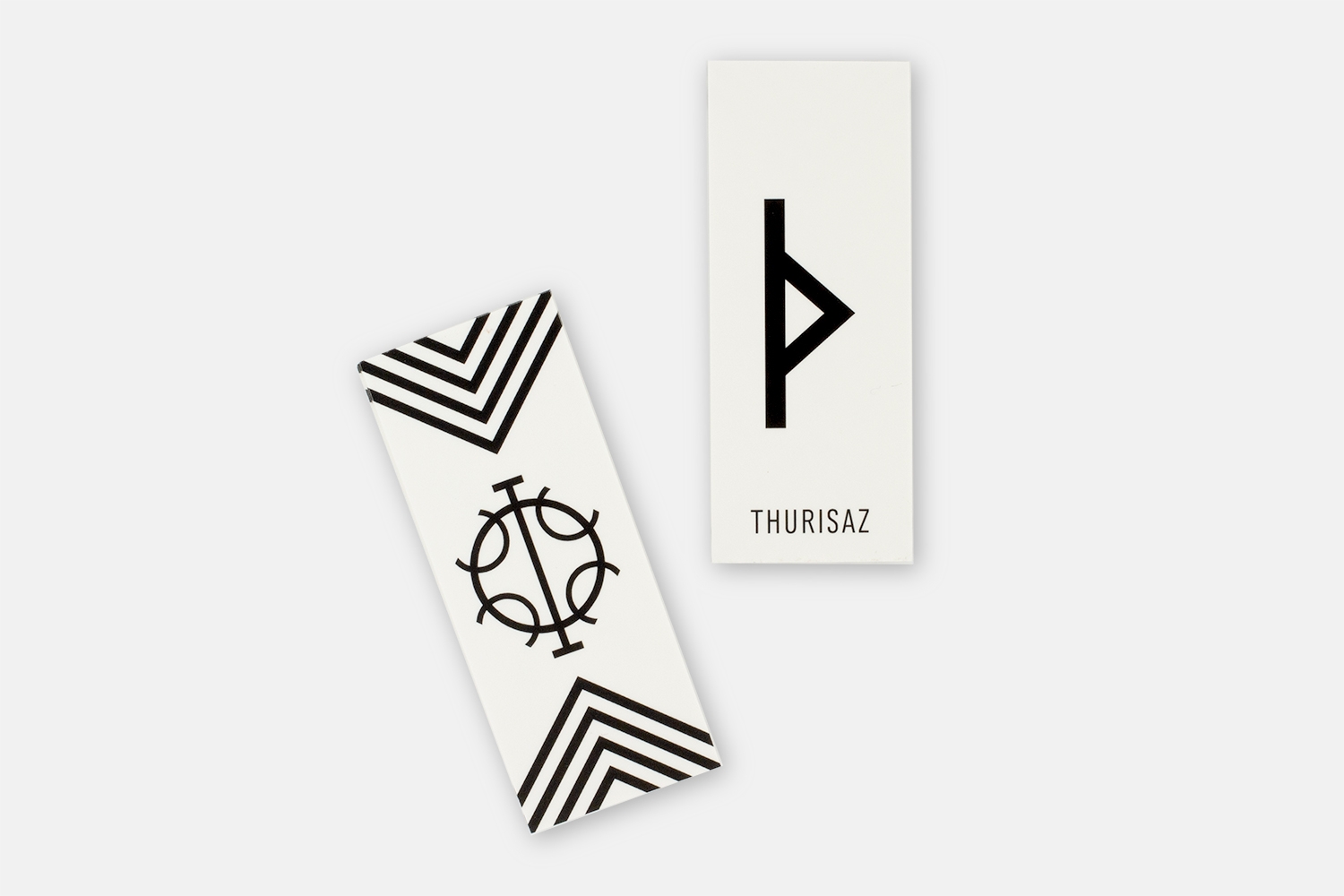
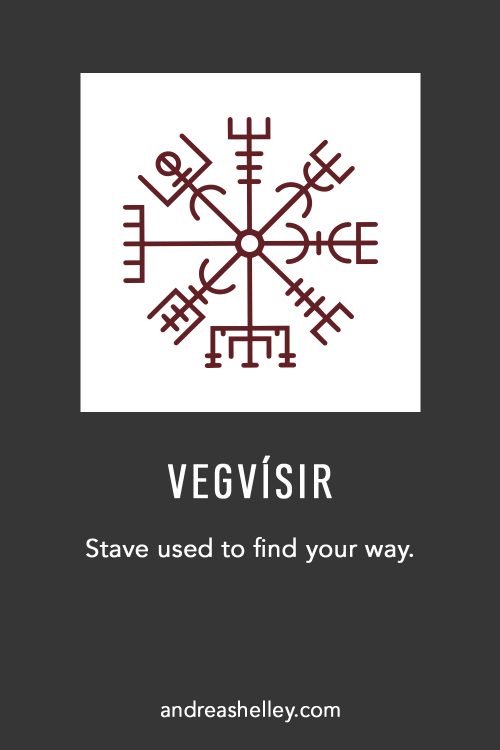

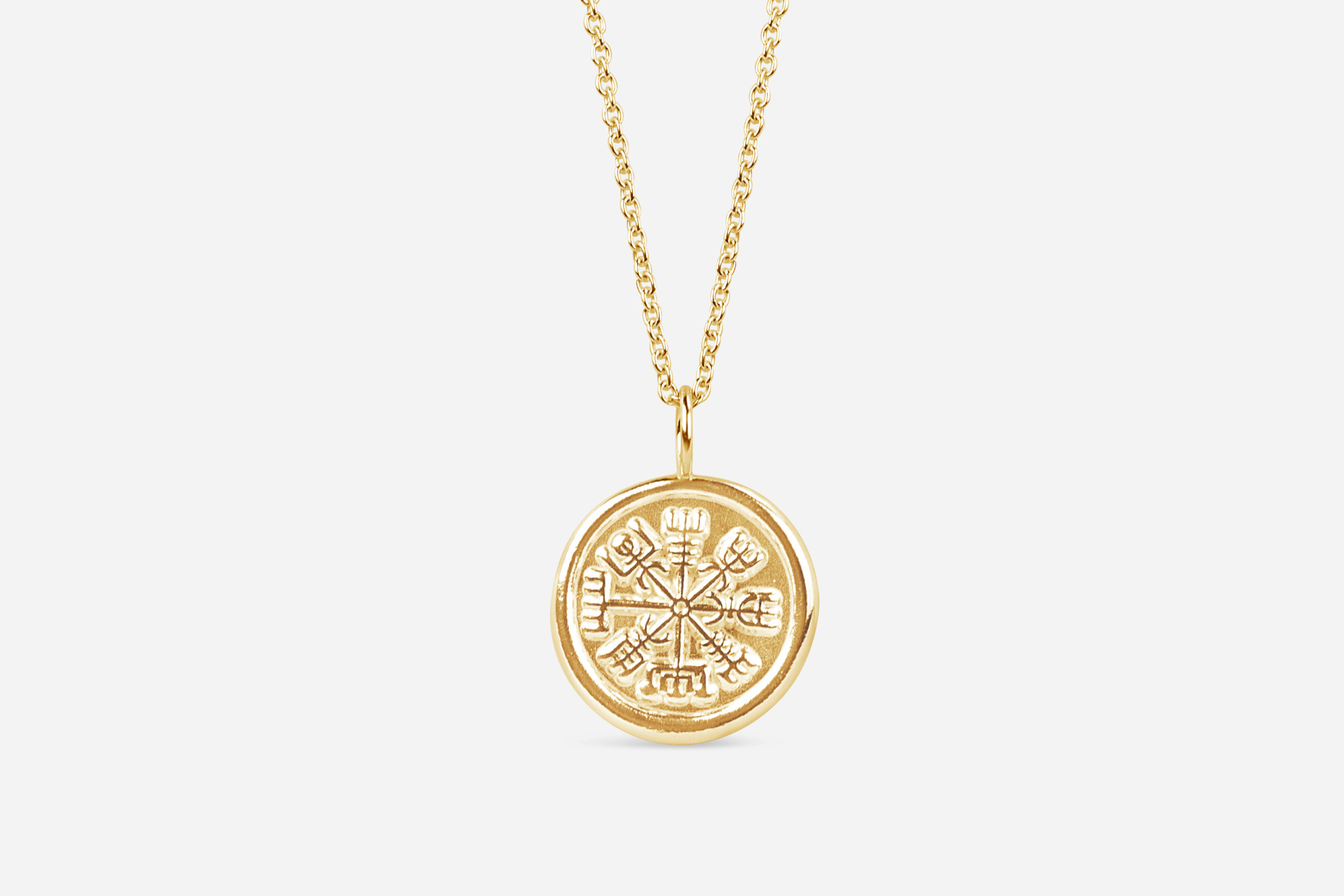
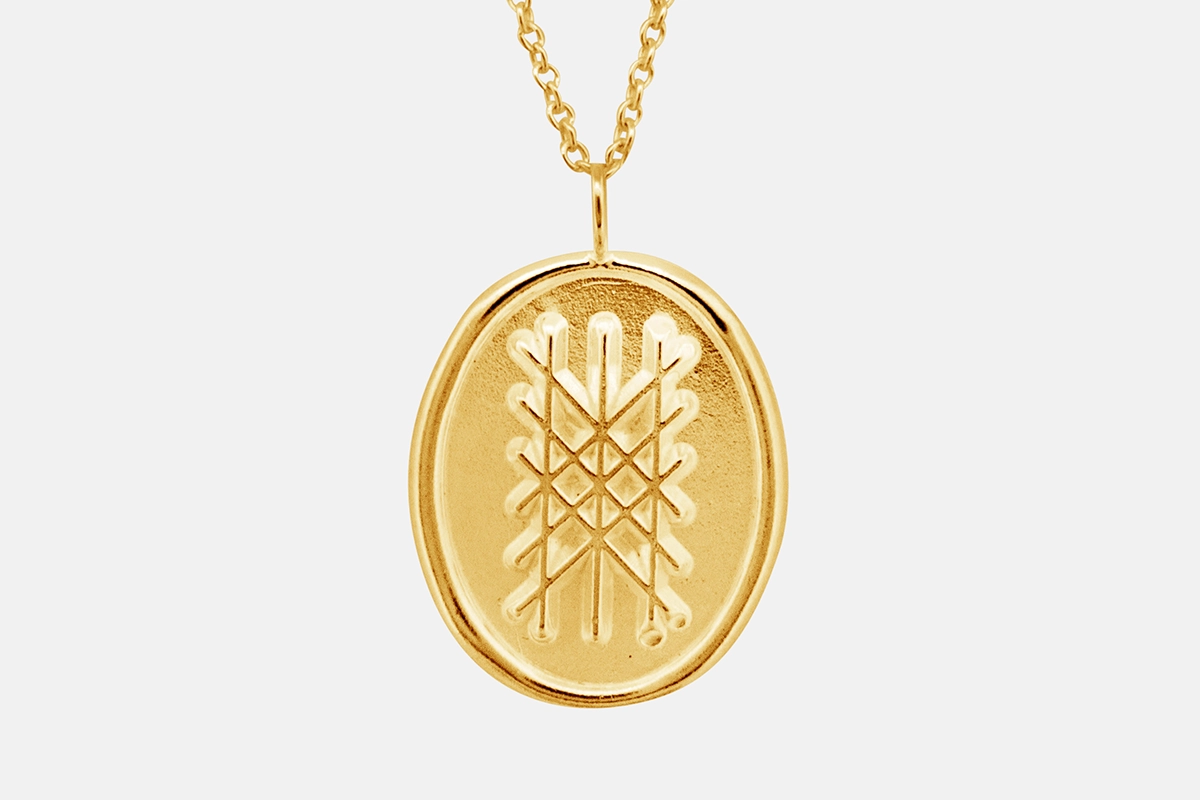
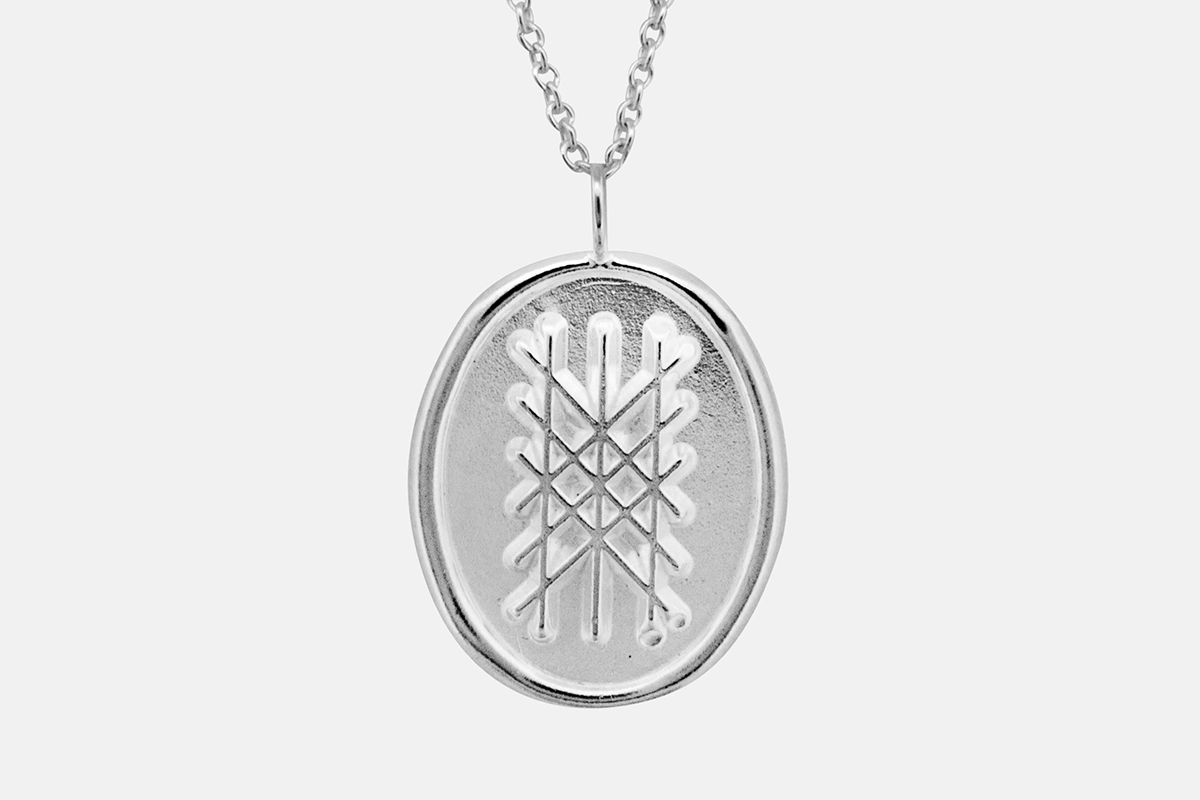

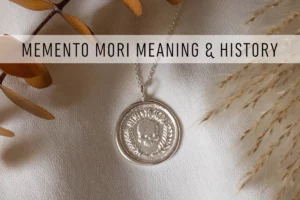
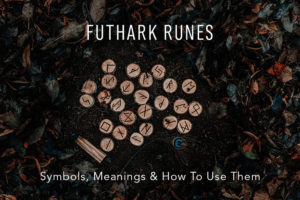
Grace
Beauty and defensive magic bindrunes as well as self empowerment
William mcafee
Hello, I am William McAfee, an inmate incarcerated in the united states, and I want to make a necklace, or rather a pendant, for my wife. Carved out of wood, that represents protection/love/health , but I want to make sure it is correctly made, for I already know that if I have anything incorrect , it could mess things up, and I don’t want anything bad to happen because of my ignorance. Can you show me anything like that, please? Much respect and love ma’am!!!!
Andrea Shelley
Hello William. Unfortunately I don’t do any wood carved jewelry, only precious metals (sterling silver and gold).
Lee Anne
I am trying to figure out how to take the symbols and put them together to make a word so I don’t just have individual letters on me. Is there any help I could get or recommendation to help me figure that out? Thank you very very much!
Andrea Shelley
Hi Lee Anne! I’m a bit confused by your question about making a word. If you’re trying to translate an English word into runes, there are a number of online tools for that. If you mean to make a single symbol from the runes in a word, that’s called a bind rune. To make a bind rune, you would put runes together, overlapping or combining common lines, until you get a symbol that you like. This is very subjective as it’s based on your aesthetic and the meaning that you’d like the symbol to have. Hope this helps!